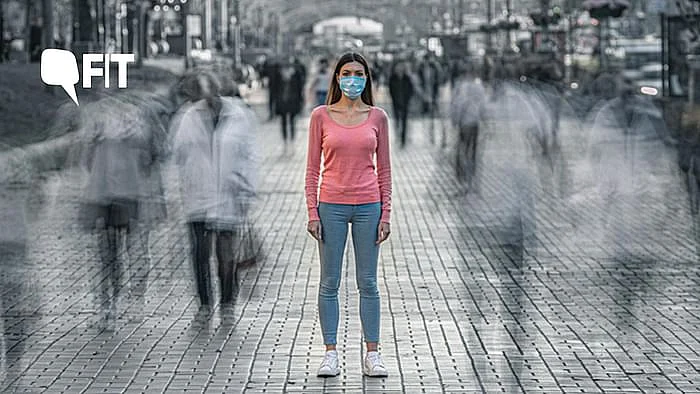
FAQ: What Does It Mean for the Coronavirus to Be Airborne?
How does airborne transmission change our understanding of the novel coronavirus?

advertisement
On Tuesday, 8 July, the World Health Organization (WHO) acknowledged that there is “emerging evidence” that the novel coronavirus may be airborne after an open letter by 239 scientists asked the agency to revise its guidelines.
A WHO official said that airborne transmission in crowded, closed or poorly ventilated spaces cannot be ruled out, but further assessment is needed for airborne transmission to be definitive, reported the BBC.
The scientists have urged that with significant evidence emerging for smaller or bigger particles remaining in the air, the safety and precautionary protocols would have to be updated to cater to airborne transmission as well.
How does the virus spread?
A respiratory infection like COVID-19 is spread by droplets expelled when an infected person coughs, sneezes or speaks.
These droplets can be of varying sizes. The relatively bigger and heavier ones do not travel far or remain suspended in the air. This is why maintaining a distance of nearly 2 metres or six feet is advised.
These droplets sink to the ground or on to objects and surfaces. People can become infected by touching these objects or surfaces, and then touching their eyes, nose or mouth.
This is why it is important to wash your hands regularly with soap and water or clean them with an alcohol-based sanitizer, according to the WHO and other public health agencies.
How does it stay suspended in the air?
There is now mounting recognition that the virus can remain suspended in the air in smaller, tinier droplets called aerosols. These aerosols can be released even when an infected person breathes or talks. Anyone who inhales the same air can catch the disease.
We don’t know for sure for how long the virus lingers in air. Experts agree that aerosols may not travel long distances or remain viable outdoors, The New York Times reported. But, crowded spaces and poorly ventilated indoors could be breeding grounds for infection.
A single person can release enough aerosolized virus over time to infect many people in a closed room, which could even lead to a superspreader event.
But aerosols are smaller in size, so they contain a smaller viral load than big droplets. Even the tiniest measures can help.
How do I stay safe?
- To put it simply: Wear your mask.
- Physical distancing and handwashing are still extremely important. But they may not be enough.
- Preventing airborne transmission would mean avoiding crowded indoor spaces as much as possible.
- If you do spend time indoors, do not forget to wear a mask, except maybe around family and friends who you know have stayed safe by isolating.
- Ensure enough fresh air is circulating through a room.
- Open windows and doors as much as possible.
- If schools, offices, malls and stores reopen, the ventilation systems may need to add powerful new filters to avoid recirculating the same air.
- In the right setting, the use of ultraviolet lights that can kill the virus may also be considered to prevent transmission through smaller droplets.
- Remember, stagnant air inside closed doors could be your enemy.
(This article was first published on FIT and has been republished with permission.)
(At The Quint, we question everything. Play an active role in shaping our journalism by becoming a member today.)
- Access to all paywalled content on site
- Ad-free experience across The Quint
- Early previews of our Special Projects
Published: undefined